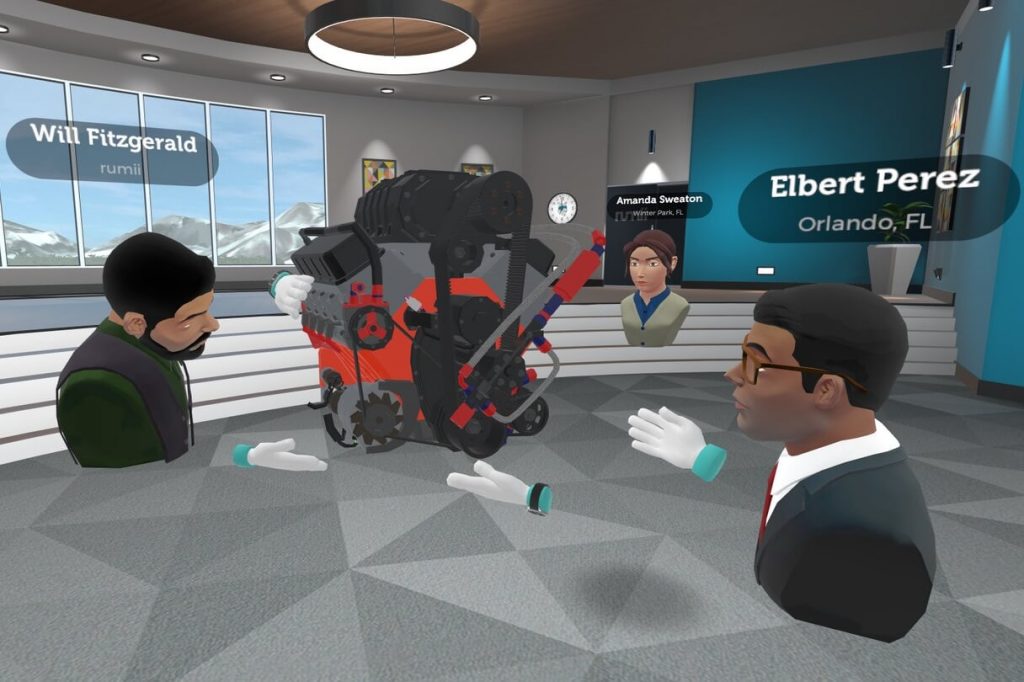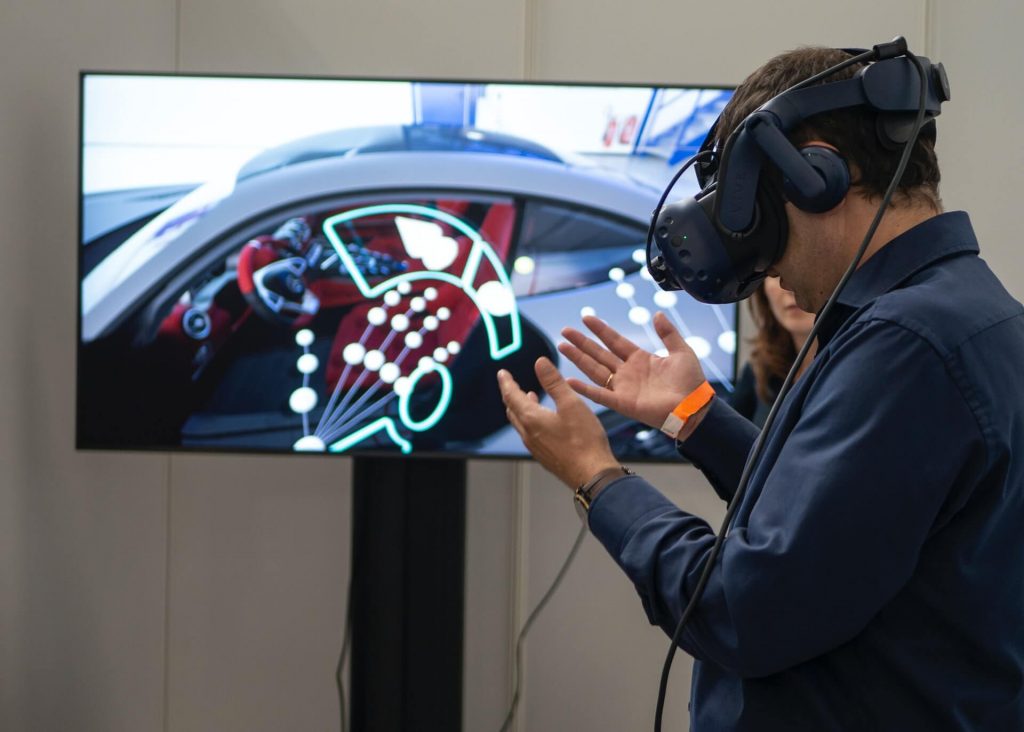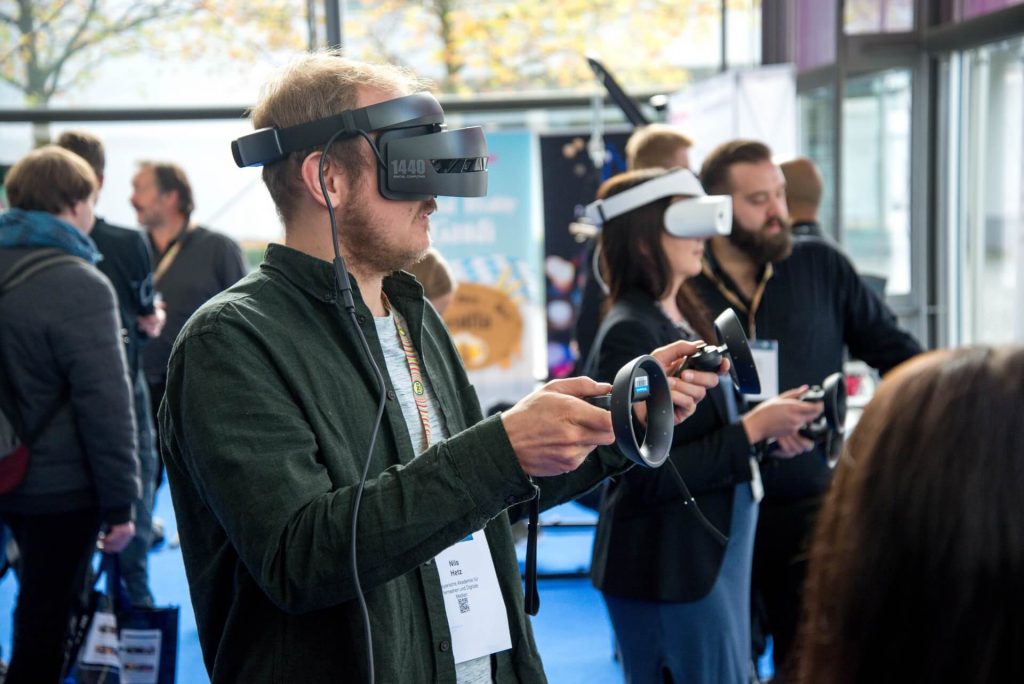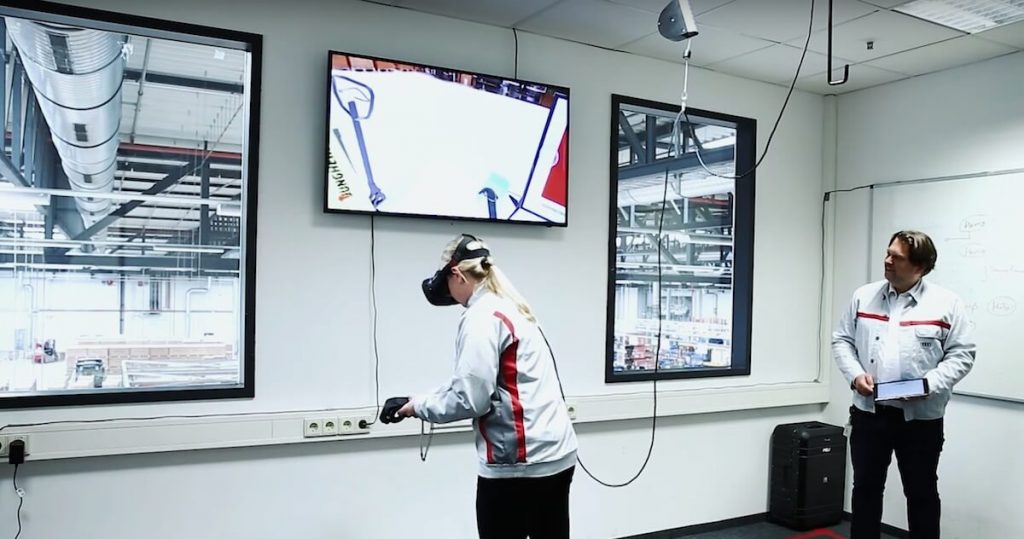VR technologies have become quite common nowadays. From virtual tours provided by hotels on their websites to VR cafes where visitors can spend hours playing video games in a virtual space. What’s particularly interesting is the way VR is being used in business. Companies in different industries are already adopting VR tech to train their employees and there are clear trends emerging in this sphere. Hence, here are the latest VR trends for workplace training.
#1 Remote Training for Hybrid Teams
The global COVID-19 pandemic had a massive impact on the way entire industries operate. Some smaller businesses were forced to close while others went bankrupt. Some companies were able to adapt to the new regulations and transitioned to either a completely remote or a hybrid setup. Instead of working from the office, employees now did all their tasks from the comfort of their homes – and the comfort aspect was noted by many.
According to statistics, 73% of employees say that they want flexible remote work options to stay even though 67% also say that they would like to have more in-person collaboration after the pandemic. Luckily, VR solutions can address both of these points. On the one hand, employees can still work from home, but on the other hand, they can also collaborate more easily in virtual spaces. Likewise, new employees don’t need to receive training in the office anymore – they can do it at home with the help of VR-powered software.
#2 AI-Personalized Workplace Training Programs
Another way VR and, more broadly, AI is crucial for workplace training is that you can create personalized training programs for new employees as well as for current employees who need to upgrade their qualifications. AI software is able to analyze large quantities of data to better understand which approach will work for specific employees. Then, the findings can be applied to assign more personalized VR programs to different employees.
Of course, some manual aspects of workplace training (e.g. writing guides for trainees to self-study) still need to be done by humans. If you don’t have the time for such tasks, you can always outsource them. You can use a website like Rated by Students where you can find writing services reviews and determine which writer will be ideal for your task. This way, you can create the course modules and then use AI solutions to do the personalization and create more effective learning paths for new employees.

#3 Expansion to Multiple Industries
As mentioned earlier, VR is already being used in a wide range of industries. The global AR and VR market is predicted to grow to $209.2 billion this year. There are already 171 million VR users worldwide and 78% of Americans are familiar with VR tech. Industries ranging from engineering to e-commerce are benefiting greatly thanks to the adoption of VR and the innovative aspect of the opportunities it creates.
Unarguably, with so many positive statistics, it’s natural for VR to be even more widely adopted. It will likely expand into industries that weren’t even initially considered as a possible environment for VR application. With such widespread VR usage, there will be more highly-trained employees who will also have enough experience (in the virtual world) to more effectively apply their knowledge and skills.
#4 Teaching New Real-World Skills
Speaking of skills, VR solutions are also able to teach new real-world skills that weren’t really given much attention before. In a world where information is being exchanged faster than ever and everything is becoming increasingly digitalized, it is often hard to keep up with everything and be everywhere. Moreover, this fast-paced world demands specialists of all backgrounds to possess skills that they never had before – and never needed before.
The new skills expected from employees can be challenging to learn, but a VR environment makes practicing easier while the learning process can be completely gamified. That being said, there are still some skills that VR can’t teach completely. For example, you might still have to outsource your writing and content creation. If you need help, you can always check come custom writing reviews of different assignment writing services to find the best writer for your task.
#5 Increased Investment in AR/VR
Last but not least, there will likely be increased investment in AR and VR (as well as AI as a whole) in the nearest future which will further promote the development of such solutions. Right now, the industries using VR the most are gaming, healthcare, education, manufacturing and automotive, and others. But the extent to which VR is used in them could change significantly in the next decade.
China and the US are considered to be the biggest investors in the VR market spending billions of dollars on it every year. Other big investors are the entirety of Western Europe and Japan. Because the VR market sees such big investments from completely different geographical locations (North America, Europe, Asia), it’s safe to say that it will be developing on a global scale and expanding the boundaries of business. AI is being prioritized by many companies, so it’s only logical that VR would be paid much attention.
Conclusion on the latest VR workplace training trends
All in all, it’s clear that VR tech is still continuously being developed and improved every year. While many businesses are already using it to train their employees, there will soon be even more companies from all kinds of industries utilizing this powerful technology for their workplace training needs.





